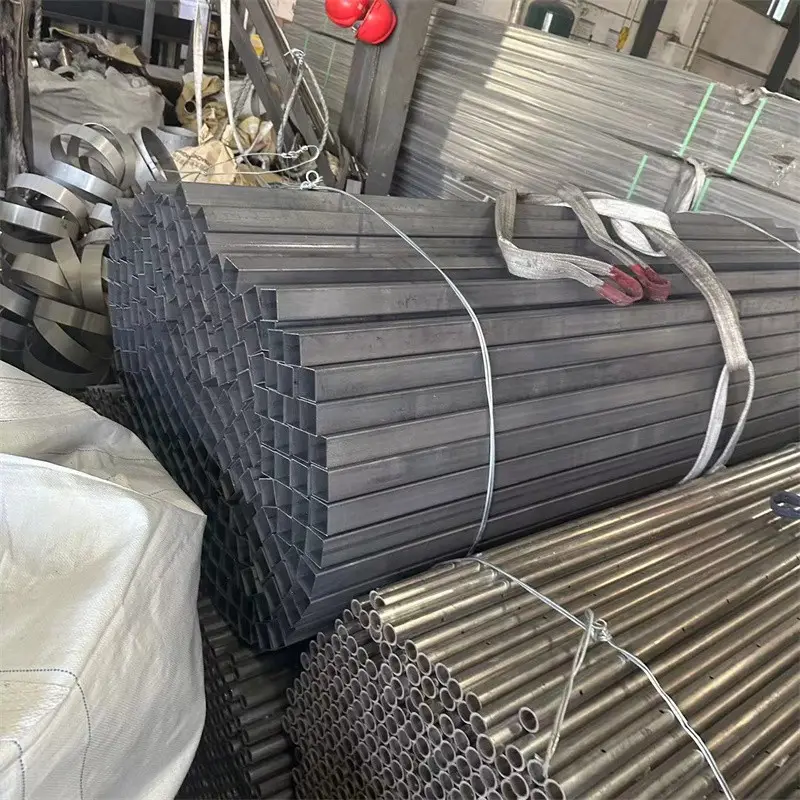Understanding the Superior Properties of 316L Stainless Steel in Modern Construction
In the ever-evolving construction industry, material selection plays a pivotal role in determining project success and longevity. 316L stainless steel bar has emerged as a premier choice for construction professionals worldwide, offering an exceptional combination of strength, durability, and corrosion resistance. This austenitic stainless steel grade stands out for its low carbon content and enhanced molybdenum composition, making it particularly valuable in demanding construction applications.
The construction landscape has witnessed a significant shift towards materials that not only provide structural integrity but also ensure long-term sustainability. 316L stainless steel bar represents this perfect balance, delivering outstanding performance in diverse environmental conditions while maintaining its aesthetic appeal throughout the structure's lifetime.
Essential Characteristics and Benefits
Superior Corrosion Resistance
One of the most compelling advantages of 316L stainless steel bar is its exceptional resistance to corrosion. The addition of molybdenum significantly enhances its ability to withstand aggressive environments, particularly in coastal areas where exposure to salt spray and marine atmospheres is common. This remarkable corrosion resistance translates to reduced maintenance requirements and extended service life for construction projects.
Furthermore, 316L stainless steel bar maintains its protective passive layer even in challenging chemical environments, making it ideal for industrial construction applications where exposure to various corrosive substances is a concern. This inherent protection mechanism ensures the material's integrity remains intact throughout its service life.
Mechanical Strength and Durability
The mechanical properties of 316L stainless steel bar make it an excellent choice for load-bearing applications in construction. Its high yield strength and ultimate tensile strength provide the necessary structural support while maintaining optimal ductility. This combination allows for design flexibility and ensures reliable performance under various stress conditions.
The material's excellent fatigue resistance and impact strength further contribute to its suitability for dynamic loading situations, common in modern construction projects. These properties ensure that structures maintain their integrity even under repeated stress cycles and sudden impact loads.

Applications in Modern Construction
Structural Support Systems
316L stainless steel bar finds extensive use in structural support systems where strength and durability are paramount. From reinforcement in concrete structures to load-bearing columns and beams, this versatile material provides the necessary structural integrity while offering superior resistance to environmental factors. Its application in these critical components ensures long-term stability and reduced maintenance requirements.
The material's excellent weldability and fabrication characteristics make it particularly suitable for complex structural designs. Construction professionals appreciate the ease with which 316L stainless steel bar can be incorporated into various architectural elements while maintaining its structural properties.
Architectural Elements and Facades
Beyond its structural applications, 316L stainless steel bar is increasingly utilized in architectural elements and facades. Its aesthetic appeal, combined with exceptional durability, makes it an attractive choice for exposed structural elements and decorative features. The material's ability to maintain its appearance over time, with minimal maintenance, provides both practical and aesthetic advantages.
Architects and designers value the versatility of 316L stainless steel bar in creating stunning visual elements that complement modern architectural styles while ensuring structural integrity. Its application in facades and external features adds a sophisticated touch to buildings while providing necessary strength and weather resistance.
Environmental and Economic Considerations
Sustainability Aspects
In an era where environmental consciousness drives construction decisions, 316L stainless steel bar stands out for its sustainability credentials. The material's long service life and recyclability contribute to reduced environmental impact over time. Its durability means fewer replacements are needed, resulting in lower resource consumption and reduced waste generation.
The production process of 316L stainless steel bar incorporates significant recycled content, further enhancing its environmental profile. This aspect, combined with its potential for future recycling, makes it a responsible choice for environmentally conscious construction projects.
Long-term Cost Benefits
While the initial investment in 316L stainless steel bar may be higher compared to alternative materials, the long-term economic benefits are substantial. The material's exceptional durability and minimal maintenance requirements result in significantly lower life-cycle costs. Reduced need for repairs, replacements, and maintenance interventions translates to considerable cost savings over the structure's lifetime.
The material's resistance to corrosion and deterioration means fewer resources are required for upkeep, leading to reduced operational expenses. This economic advantage becomes particularly evident in projects where accessibility for maintenance is challenging or where downtime costs are significant.
Installation and Maintenance Guidelines
Best Practices for Installation
Proper installation of 316L stainless steel bar is crucial for optimal performance. Professional handling and installation techniques ensure the material's properties are preserved and its full potential is realized. This includes using appropriate tools and methods for cutting, welding, and fastening, as well as maintaining cleanliness during installation to prevent contamination.
Special attention should be paid to proper storage and handling before installation, protecting the material from potential damage or contamination. Following manufacturer guidelines and industry best practices ensures the longevity and performance of 316L stainless steel bar in construction applications.
Maintenance Requirements
One of the most appealing aspects of 316L stainless steel bar is its minimal maintenance requirements. Regular inspection and basic cleaning are typically sufficient to maintain its appearance and performance. The material's self-healing passive layer continues to protect it from corrosion, requiring only occasional attention to maintain its pristine condition.
When maintenance is necessary, simple cleaning with appropriate methods and materials is usually adequate. This low-maintenance characteristic makes 316L stainless steel bar particularly attractive for projects where access for maintenance is limited or where minimal disruption is desired.
Frequently Asked Questions
What makes 316L stainless steel bar different from other grades?
316L stainless steel bar distinguishes itself through its enhanced corrosion resistance due to higher molybdenum content and lower carbon content. This composition makes it particularly suitable for harsh environments and ensures better welding characteristics compared to other grades.
How long can 316L stainless steel bar last in construction applications?
When properly installed and maintained, 316L stainless steel bar can last several decades, often exceeding 50 years in typical construction applications. Its durability and corrosion resistance contribute to this exceptional service life, making it a cost-effective choice for long-term projects.
Is 316L stainless steel bar suitable for all climate conditions?
316L stainless steel bar performs exceptionally well in various climate conditions, including coastal environments and areas with high humidity. Its corrosion resistance makes it particularly suitable for challenging environments where other materials might deteriorate more quickly.


